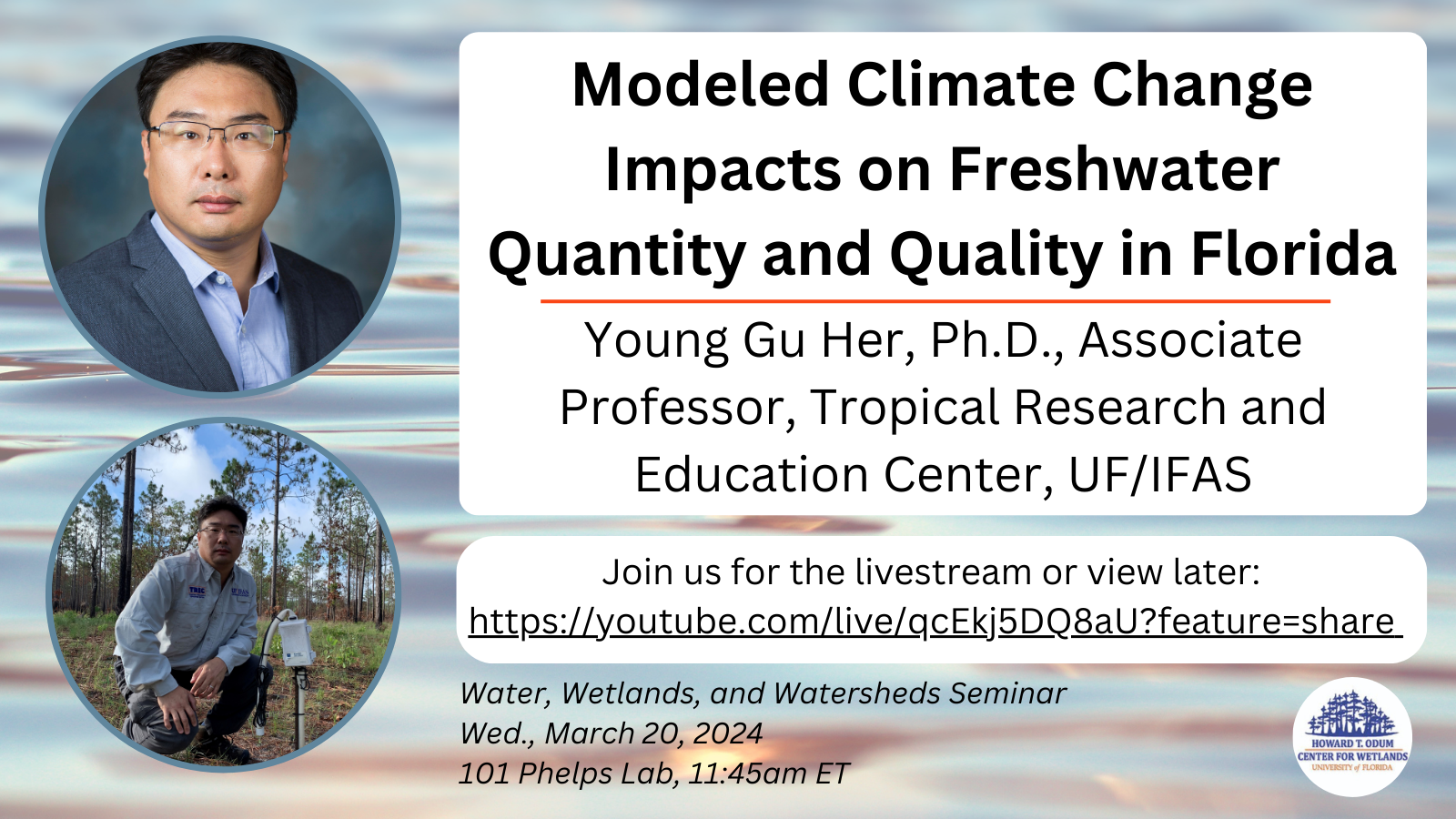
Young Gu Her, Associate Professor, Tropical Research and Education Center, UF/IFAS
Join us for the livestream March 20th, 11:45am ET: https://youtube.com/live/qcEkj5DQ8aU?feature=share
(Please visit our YouTube channel main page for the stream if there are any issues with the direct link.)
ABSTRACT
Lake Okeechobee and its drainage basins, the Northern Lake Okeechobee (NLO) watershed, have faced climate changes. Sea level rise is expected to bring additional challenges to agriculture in south Florida. The Hydrological Modeling team at the Tropical Research and Education Center, UF/IFAS evaluated the impacts of 1) climate change on the water quantity and quality of the NLO watershed–Lake Okeechobee system using a spatially integrated modeling framework combining watershed loading (SWAT of USDA ARS or WAM) and receiving waterbody (EFDC of EPA) models together and 2) sea level rise on the groundwater level, saltwater intrusion process, and salinity levels in Miami-Dade County using a regional groundwater model, the Urban Miami-Dade (UMD) model developed by USGS.
The surface water modeling (SWAT + EFDC and WAM) experiment found that the Chl-a and DO concentrations of the lake would be more sensitive to the climate forcings, while the TN and TP concentrations would be more responsive to the external loadings from the upstream basins and the water level operation scenarios. The water quality of Lake Okeechobee was projected to degrade in the future due to the projected increase in air temperature and/or in the external nutrient loads from the upstream watersheds. The TP load was projected to increase in the future when the current manure and fertilizer rates were maintained the same in agricultural lands. The results demonstrate that the water quality of the lake was a function of air temperature and internal hydrodynamics driven by lake water level operation and wind as well as nutrient loads from the upstream areas. In addition, the groundwater modeling (MODFLOW-NWT or UMD) experiments found the overall groundwater elevation in Miami Dade County may increase by 0.25 m in the near future period under the NOAA Intermediate High sea level scenario combined with the climate scenario of SSP2-4.5. Areas that may be affected by brackish water would increase by 0.5% in the near future period, while areas affected by seawater would increase by 3.7% for the same time frame. Seawater and brackish water were projected to intrude into the fresh groundwater aquifer; however, the impacts might be limited to 15 to 20 km from the shoreline. The groundwater modeling results indicate that the groundwater level rises may be controlled mainly by the distance from the coastline rather than the land uses and covers and may be more sensitive to the projected sea level changes than the projected climate changes. In addition, groundwater flooding (or prolonged high soil water content due to elevated groundwater) would be an additional concern to agricultural production, besides saltwater intrusion, in South Florida.
BIO
Young Gu Her is an associate professor of hydrology and agricultural engineering at the Tropical Research and Education Center, IFAS/UF. He has been involved in various hydrological modeling and monitoring projects, and his current research focuses on evaluating and developing management practices under changing environments for improved sustainability. The current research project includes 1) evaluating the environmental and agricultural effects of crop rotation between sugarcane and flooded rise using an agroecosystem model combined with a groundwater model, 2) assessing the environmental impacts of agrivoltaic systems, and 3) projecting hardiness zones for tropical fruit trees under changing climate.
POSTCARD
